Class Editorial: Guide to Thrive at NHS
December 9, 2022
Attending the ninth-largest high school in the state of Wisconsin, according to Public School Review, requires specialized skills to iteract with peers, classmates and teachers on the daily. My trusty Composition Notebook empowers me to sketch and reflect on the climate of NHS. My evolved approach features my senior path and depth of my experience. Here is a guide designed to improve student comfort when attempting to navigate a environment such as NHS.
Follow this guide to thrive at NHS. Pay heed to the following: Passing time, bathrooms, fashion, group work, lunch and parking.
Navigating NHS
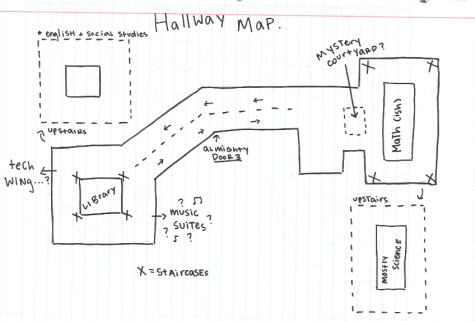
The entangling setup of the James B. Conant building, or Conant, often causes problems for underclassmen, and freshman in particular. The setup of Conant is unforgiving to most and especially to newcomers. To this day, I find myself stuck in the loop of Conant, trying to figure out which stairwell gets me to class faster. The ensuing stampede of people in the hall trying to get to their next class creates further chaos. The crowd feels like a concert, cramped next to people I’ve never said a word to. The walk itself feels like an obstacle course, and if I step on someone’s shoe the ensuing staredown will compliment it. Oh, and I can’t forget my earbuds to suppress the uncomfortable conversations I hear around me. Luckily, the mob of people has moved quickly today, and I’ve already entered stage two of passing time: The Link
At the end of each class, the timer for 10 minute passing time begins. For classes near each other, this is a leisurely time to use the restrooms, check my phone, or get a drink. However, during passing time I am faced with the trek from Armstrong to Conant through the Link. The Link is a highway, with heavy foot traffic and two lanes. The left of the hallway is heading down, while to the right it’s going up. Don’t push, don’t step on shoes and don’t run. If someone is too slow, or a gaggle of friends is clogging the way, here’s what to do: Approach from the back, and move to the left toward the open center of the hallway. Don’t try to squeeze between a mass of people and a wall — experience loss in the current of students everytime. Once I’ve gone around the whole group, maintain a faster-walking speed until I’m far ahead. Then comfortably walk to my next class, with no one in my way.
Armstrong is probably the most daunting part of the school for an incoming freshman. From the never ending circle upstairs that I walk around 50 times and still miss my class to the mysterious depths of the music suites and tech wing, navigating Armstrong can be hard. Just remember: stay calm. For the most part, both upstairs and downstairs are just loops. Walk in circles until the desired classroom appears, or go insane from looking at hallways that look exactly the same– I don’t care. Do what works best! Keep in mind that there’s two rooms connected to the library (I don’t understand it either) and a random strip of classrooms by the set of stairs closest to the link. The music rooms are easy to find because the band is loud, and hearing faint choral warmups from down the hallway is a different kind of uncanny. The tech. wing is in between the Apollo and Gemini Commons, and it consists of basically one underconstruction hallway. Although, my reference to the commons might be a little out of touch because I don’t think anybody actually knows what the commons are named, except for show choir kids who hear the words “Apollo” and “commons” together at rehearsal. Overall, remember to take deep, calming breaths and pay close attention to room numbers when in Armstrong. I would not recommend getting panicked, it will only make the labyrinth more confusing.
The Bathroom Situation

We have all been in this situation: the intense fear of searching for a usable bathroom while clutching a crusty bathroom pass from 2005. Below is a comprehensive guide to finding a bathroom at NHS:
When entering the Conant building there are three options available for bathrooms. Unfortunately, all three come with significant drawbacks. First, the infamous bathrooms near room 420, an apt location for events. Around the corner are the new gender neutral bathrooms, theoretically. They are never open, so one cannot be sure whether a bathroom actually exists behind the mysterious double doors. Finally, the forgotten bathrooms by the Conant staircase. More often a site for traffic collisions between hallway goers and bathroom users than a functional space, the forgotten bathrooms are relatively empty most of the time. Because of their lack of boundaries with the hall, these bathrooms are more a part of the hallway than a private area. These are the best, or rather least-worst, options in Conant.
It is a common misconception that the link lacks a bathroom. Causing most to walk either to Conant or Armstrong, an uncomfortable distance to cover on a full bladder. Yet, the one thing we have learned in our four years at NHS — there is a hidden bathroom. Enter the foreboding nurses office, walk down a dark, bare hallway, and find a glorious, secluded retreat. This hidden bathroom is always fully stocked with toilet paper, soap and even paper towels; a rare gem at NHS. This may seem like paradise, but be warned, the use of this bathroom requires an excuse, so good luck.
The only option left for people desperately searching for the bathroom: Armstrong. The trek begins with the music wing bathrooms, arguably the best bathrooms in the school. The pros: fully stocked with paper towel, stalls that lock, and soap in the dispensers. The cons: locked 95 percent of the year. On the off chance that these bathrooms are unlocked, opening the door will reveal 30 students lounging, eating, — REDACTED — and talking. If privacy is not a concern, we recommend the tech. wing bathrooms. Enter the female bathrooms and find missing stall doors, broken locks and three people sitting in the only working stall. The male bathrooms on the other hand may be the best bet for those seeking to use a bathroom for its intended purpose. These bathrooms lack a crowd of people and are incredibly convenient for the two classrooms located in the entire hallway.
Overall, the bathrooms at NHS are subpar at best, so best of luck on this terrifying field trip.
Dressing for Success
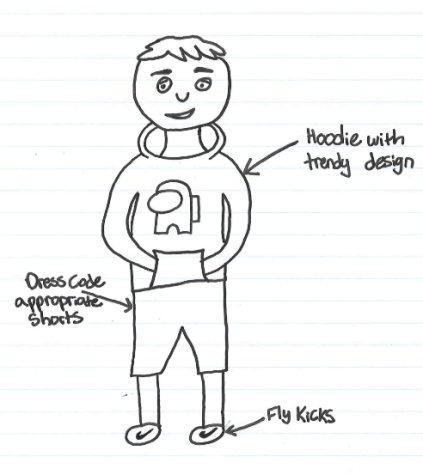
One of the biggest worries of the average high school student is how they dress. Many students fear judgment of their clothing choices. At NHS there are many factors that determine how students dress: location of classrooms, activities involvement and comfortability. As a result, there are no two outfits alike at NHS
When exploring the classrooms of NHS, students will encounter a variety of different temperatures. From the ice cold science rooms of the Tech. Wing, to the newest, but warmest corner of the building in Conant, the climate inside the walls of NHS is as consistent as Wisconsin weather patterns. So, any student hoping to succeed at NHS should arrive with apparel fit for any environment.
Students also have the opportunity to express their NHS involvement through fashion. Many of the school’s groups and activities produce merchandise and apparel for their members to wear at any time, especially on days of competitions or games. If struggling to decide what to wear, a student can never go wrong with representing their activities through clothing.
While some students choose to dress more formally with articles like dresses, suits or button ups, nobody at NHS is opposed to dressing purely for comfort. Sweatpants or leggings paired with a sweatshirt is one of the most common combinations of clothing worn by students. When in doubt, wear what is comfortable.
Always dress for oneself, not peers. When seeking an opportunity to wear something zany, get out and support fellow students in extracurricular activities with dress-up themes provided by the Rocket Rowdies of NHS.
Students are here to learn, not walk the Red Carpet, so avoid the antics of fashion.
Dealing with Group Work
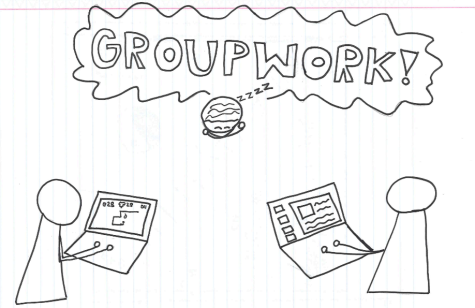
The Procrastinator:
It’s group project time! The teacher assigned a group project and along with that, partners for it as well. Great . . .The teacher starts reading off the groups and calls out each name one at a time. Maybe this won’t be so bad after all, it will be a good group. Oops, thought too soon, as group members are called — signs of happiness fades away. This group is now stuck with a procrastinator who can’t seem to even think about a project until the night before it’s due. It’s time to get together in groups and start working. The teacher then tells the class the project is due in a week. Plenty of time for everyone to do their work and get it done . . . Two nights before the assignment is due and one partner still hasn’t done their work. Will the project ever get done? There are three options to get this done; one, do the work for them, two, trust that they will get it done in two days and let it go or three, contact that partner and let them know what is going on. The best way to work with someone is to communicate with them. Communication is the key to success with a procrastinator. Ask them about something in the project or for their help with a piece of information. DO NOT under any circumstance tell them they’re doing a bad job, that will only motivate them less. Just keep asking them questions about the project; it will get it on their mind. Once they are in the flow of the project it’s nothing but smooth sailing from there. Now working together and finishing the project before the last minute all because of communication.
The Overachiever:
Let’s set the scene. It’s the one class that’s bearable, but also unbelievably unbearable because every soul in the room is a stranger. Now usually this wouldn’t be an issue; however, the teacher has just announced a group project and is choosing partners for everyone. Lucky day! Once matched with a partner, collaboration starts. This is when it becomes apparent they are . . . *drumroll* . . . an overachiever. An overachiever is someone who takes charge, but in the most annoying way possible. There isn’t much communication, and they tend to come off bossy. Naturally, the easiest thing to do is let them do all the work; however this diminishes one’s academic growth. A Neenah Rocket should be amazing and do their part, so bargaining for contribution is the best way to go. One way to combat the overachievers’ need for control is by talking and communication. Wow, whoever thought of that! Communication is the best way to get on the same wavelength, then when apart, or together, there is comfort in knowing the two sides of the partnership share a common end goal. Taming an eager, studious, control freak . . . I mean overachiever, can be difficult. Nevertheless, establishing a plan in unison creates a great chance of a new possible friend. Key word: possible.
The Ghost:
They’re there, but they aren’t really there. The ghost of the group haunts the Google doc with their icon in the upper right corner but doesn’t appear anywhere else in the assignment. They may appear back from time to time to read what’s been written, but don’t count on them to stay and contribute. When assigned to work with the ghost, combatting their work habits is the first step. No one wants to be stuck with double the work and have them take credit for it. Bribing or threatening may work, but not ideal. Some people, however, might need a little extra push to get going on their work. After all, group work happens most efficiently when working as a team. It may seem easier to tell the teacher about the situation, but it may save the next group who gets partnered with the ghost to encourage their motivation to work.
Lookout for Lunchtime
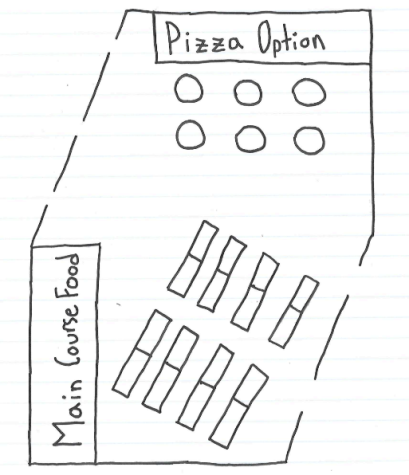
Look at the menu or bring their own food:
When a student walks into the lunchroom, they can see signs everywhere showing them what there is to have that day. First walk into the designated food pickup areas where they will have 2-3 choices. Grab one fruit or vegetable, their choice of the main course, and any type of milk. From there they walk to the checkout and scan the School ID Card or type in their pin to pay for the lunch. Students have to wait until she gets all set before they leave or else . . . Do not try to steal anything because there are cameras watching students every move. If they get caught, there will be a fine and their parents won’t be too happy about that. If students follow these simple steps they can easily enjoy a hearty meal within three minutes.
Finding a table to sit at during lunch:
Securing a table during a packed lunch time can be tricky. The simplest way to navigate the wild jungle of the cafeteria is to find a place to eat with friends. There are no assigned seats, but people tend to “claim” a table or spot in the first few days and generally try to stick to it. This doesn’t mean that students can never sit anywhere else, but there is no reason to cause havoc for a place to sit. Make sure all the people have chairs to sit at a round table and check if a chair is being used before taking it from another table. There is no need for stealing chairs. There is stacks of chairs on the side of the cafeteria if needed. Do not move anyone elses’s things to make space or leave things all over.
Figure out time (A, B or C) and find friends who have that lunch:
At the start of each semester, students are given a letter lunch for each day. A lunch starts at 11:20 a.m. B lunch starts at 12:15 p.m. and C lunch starts at 1:05 p.m. This can be stressful because lunches like C lunch pretty much have to wait the whole day to eat, which can make students upset. C lunch students require packed snacks. This can also be stressful for students because they have to wait and see if their friends have the same lunch as them. So every time schedules are released, students rush to find someone who has the same lunch as them. It is like waiting to find out if the lottery scratch off is a winner. When students become a junior or senior, students can leave campus to get a choice of fast food or some people go home to eat if they live close enough. Students have to remember though they still only have 30 minutes to decide where they want to eat, drive there, get their food, and eat their food, and then come back in time for the next class. This is only for upperclassmen though, so if the student is not an upperclassmen — they are stuck in the cafeteria.
Picking up after Lunch:
Nothing is worse than going to sit down at a table and finding leftover food on the table or on the floor. There is an easy way to fix that. The students need to pick up after they are done eating. There are garbage bins throughout the cafeteria conveniently sitting in the way of the exits, so students do not have to go out of their way to depose of garbage. This is not at home where their mom will come clean up after a mess is made. Many of us are at the age where we can drive and have jobs. We can manage cleaning the table, so it does not look like a war zone after the lunch period.
Practical Parking:
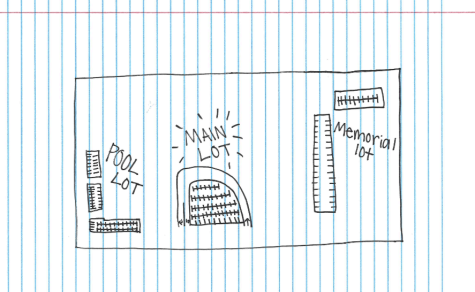
Arrival and Leaving:
Parking in other students’ spots without their permission is a definite no-go in the main lot. I’d rather take a spot on the street or one in the last row of main than get the call of shame to go move my car in the middle of class for parking in someone else’s spot. Leaving, however, is much harder then arriving to NHS for anyone in the main lot. As one of the many unlucky people who have a pass number over 50, leaving school is a shared struggle. If I am not in my car by 3:22 is it most likely that I will end up getting stuck waiting for 10 minutes before getting out of the parking lot. So to get out of the parking lot within 3 minutes, there is only one solution. RUN.(Speed walking is also acceptable.)
Location:
Throughout my years at NHS, it has been apparent to me, the hierarchy of parking locations. As one can imagine, the main lot is the best place to have a spot because of the guaranteed parking stall. In second place is the pool lot. It is still on campus and easily walkable. In dead last is the Memorial lot. I don’t know anyone who has said that the Memorial lot is their favorite place to park. Another issue arises when people start to park in spots where they don’t have a parking pass. This tends to happen when sophomores start to get their license and don’t want to buy a parking pass, so the pool lot starts to fill up. This is definitely a challenge for juniors who paid for a parking spot. The moral of the story: pay for a parking pass, park in the correct spot, and donations can be made to NHS when purchasing a Memorial parking pass.
Parking in Your Spot:
It should seem like a given that parking straight and in the lines is a requirement at NHS, but that seems to be a problem for some people. This problem became so bad that an Instagram page was created to post pictures of bad parking jobs in the lots of NHS. So, make sure to park in a straight line, so that there are no more embarrassing Instagram posts about parking. Also, don’t park in a spot that is reserved for someone else. This includes COVID testing spots, staff parking or visitor spots. Speaking from personal experience, the school will find out about it and have the car moved by the owner.
Transitioning somewhere new might seem like a lot to take in at once, but as long as students follow this guide, they’ll feel like they’re back at home!
Hayden Ahlswede • Dec 14, 2022 at 7:39 PM
I thought the Guide to Thrive article is a great article to read as an underclassman. I learned plenty of new things, for example, the hidden bathrooms around the school and the consequences of not parking in the correct spot. I found this article just the right length to cover a lot of what’s crucial to know at NHS, while also making it engaging to read.